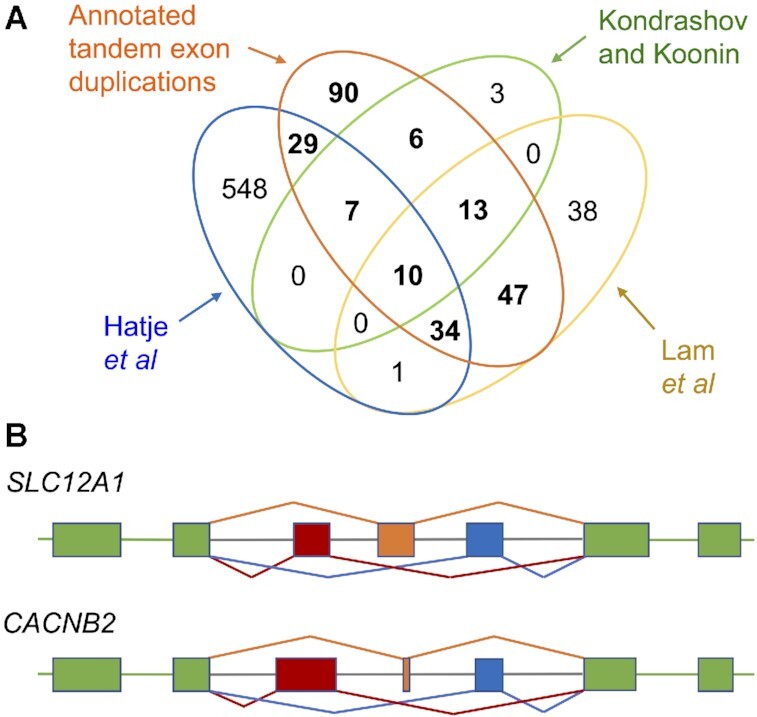Figure 3.

Overlap between tandem exon duplications and previous studies. (A) The intersection of the Kondrashov and Koonin (24), Hatje et al. (27), Lam et al. (30) analyses with the tandem exon duplication-derived substitutions annotated in GENCODE v33. The distribution of tandem exon duplication-derived substitutions is in bold. (B) The two clusters of multiple mutually exclusively spliced exons annotated in the human reference sets. Exons proportional to size, introns not to scale. Constitutive exons are shown in green, the three mutually exclusively spliced exons in each gene are shown in dark red, orange and blue. In SLC12A1 coding exons 2, 3, 4a/b/c, 5 and 6 are shown. The most recent duplication (last common ancestor with amphibians) is exon 4a (in dark red). In CACNB2 the coding exons are 5, 6, 7a/b/c, 8 and 9. The most recently evolved of these non-homologous exons (last common ancestor with amphibians) is exon 7c (blue).
